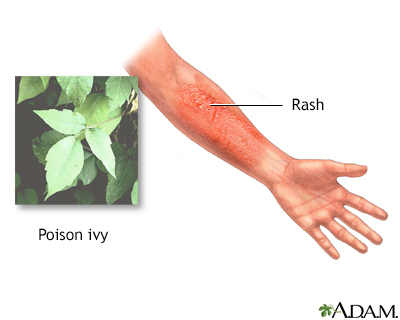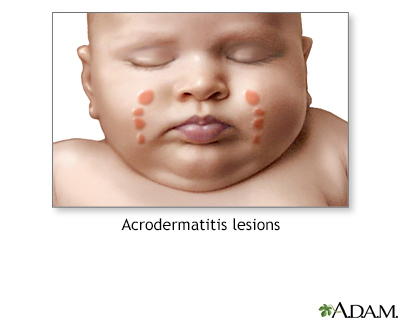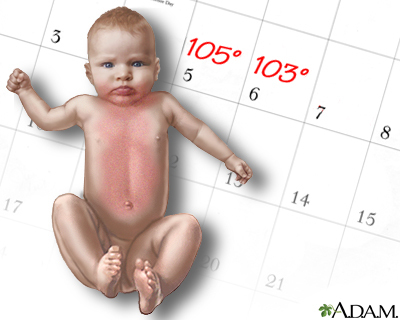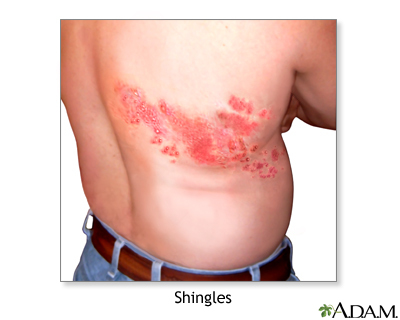Stopping Sepsis: Understanding the Signs and Symptoms
Sepsis is like an ember that sparks from a small campfire, suddenly threatening the whole forest. If not treated early, it can progress into septic shock. The…

Update your location to show providers, locations, and services closest to you.
Rashes involve changes in the color, feeling or texture of your skin.
Skin redness or inflammation; Skin lesion; Rubor; Skin rash; Erythema
Often, the cause of a rash can be determined from how it looks and its symptoms. Skin testing, such as a biopsy, may also be used to help with diagnosis. Other times, the cause of the rash remains unknown.
A simple rash is called dermatitis, meaning inflammation of the skin. Contact dermatitis is caused by things your skin touches, such as:

Seborrheic dermatitis is a rash that appears in patches of redness and scaling around the eyebrows, eyelids, mouth, nose, trunk, and behind the ears. If it happens on your scalp, it is called dandruff in adults and cradle cap in infants.
Age, stress, fatigue, weather extremes, oily skin, infrequent shampooing, and alcohol-based lotions aggravate this harmless but bothersome condition.
Other common causes of a rash include:
Many medical conditions can cause a rash as well. These include:
Most simple rashes will improve with gentle skin care and by avoiding irritating substances. Follow these general guidelines:
Hydrocortisone cream (1%) is available without a prescription and may soothe many rashes. Stronger cortisone creams are available with a prescription. If you have eczema, apply moisturizers over your skin. Try oatmeal bath products, available at drugstores, to relieve symptoms of eczema or psoriasis. Oral antihistamines may help relieve itchy skin.
Call 911 or the local emergency number if:
Call your health care provider if:
Your provider will perform a physical examination and ask about your medical history and symptoms. Questions may include:
Tests may include:
Depending on the cause of your rash, treatments may include medicated creams or lotions, medicines taken by mouth, or skin surgery.
Many primary care providers are comfortable dealing with common rashes. For more complicated skin disorders, you may need a referral to a dermatologist.
















James WD, Elston DM, Treat JR, Rosenbach MA, Neuhaus IM. Cutaneous signs and diagnosis. In: James WD, Elston DM, Treat JR, Rosenbach MA, Neuhaus IM, eds. Andrews' Diseases of the Skin. 13th ed. Philadelphia, PA: Elsevier; 2020:chap 2.
Ko CJ. Approach to skin diseases. In: Goldman L, Schafer AI, eds. Goldman-Cecil Medicine. 26th ed. Philadelphia, PA: Elsevier; 2020:chap 407.





Sepsis is like an ember that sparks from a small campfire, suddenly threatening the whole forest. If not treated early, it can progress into septic shock. The…

Senior athlete Cecil Cordell won five gold medals at the Alaska International Senior Games in Fairbanks, Alaska, this August. His success came after he had hip…

If you’ve ever had chicken pox, you could get shingles at any time. The painful rash is caused by the same virus, which can remain dormant in the body for decades. What’s more, once the rash...